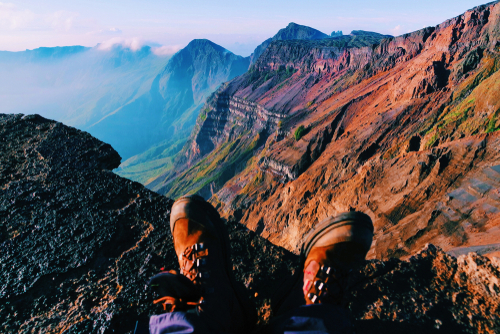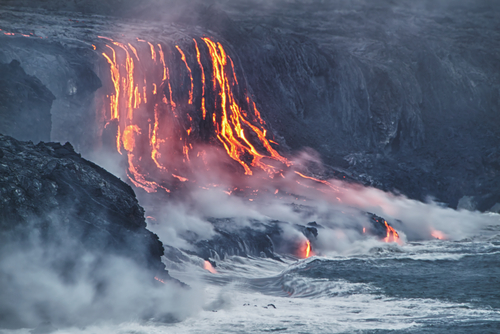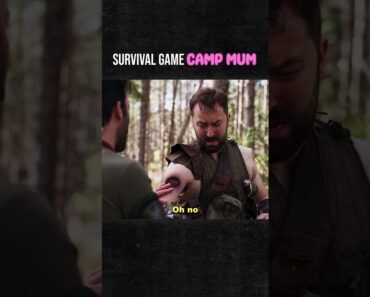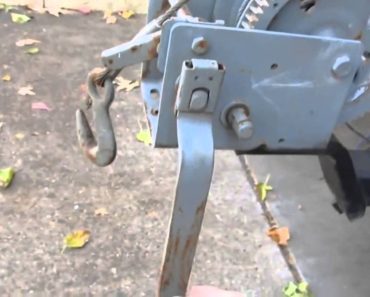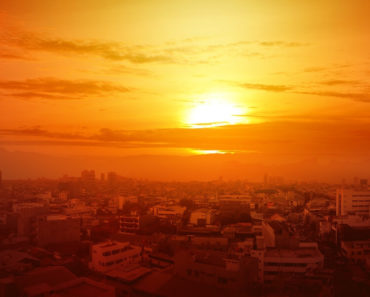Few people know that in April, we marked 206 years since one of the most destructive volcanic eruptions ever recorded in human history, the Tambora eruption.
Although this event was one of the deadliest natural disasters documented, you won’t find much information about it unless you’re passionate about volcanology.
As preppers, we classify natural disasters as some of the most probable events that could threaten our safety in the near future. Even so, how many are aware of the next Tambora? Could we face a similar massive volcanic eruption in our lifetime? And if so, what can we do to prepare for it?
I’m afraid the news is not good, and few people are willing to debate such a topic and discuss what lies beneath the ground. When it comes to volcanoes, I feel we should look at the past to prepare for the future.
The Tambora Eruption
I must admit that this topic is of great interest to me as I’ve read everything I could find on the subject and it still fascinates me. The Tambura volcano or mount Tambora is (still) an active volcano located on the Indonesian island of Sumbawa. Before its eruption in 1815, it was one of the tallest mountains in the Indonesian archipelago, standing above the clouds at 14,100 feet.
The records show that three years before the eruption, the volcano started giving warnings that it may soon erupt, and loud trembling sounds, small explosions of steam and ash made people worry. Even so, people didn’t evacuate the island as they were unaware of what might follow.
On April the 5th, 1815, the first massive volcanic eruption took place. It caused explosions so powerful that they were heard in Java, sparking rumors of battles and invasions that made the inhabitants leave the island.
Just five days after the initial eruption, a second one followed that removed approximately 1,640 ft from the top of the mountain and lasted for five days. The pyroclastic flows destroyed everything in their path, devastating the communities around the volcano. A massive column of ash almost reached the edge of space, and storms of hot gases burned all life forms on the island. The immense quantity of ash and debris that hit the water triggered a tsunami that reached the surrounding coasts.
At the time being, it seemed that the worse has passed, but in July, the volcanic had its most powerful burst that left a crater with a diameter of 3,7 miles and buried the landscape under tons of ash. It is estimated that more than 70,000 people were killed, but the aftermath of the eruption was worse than everything people could have imagined.
Months after the eruption, survivors in nearby regions went through hell since their homes and crops were destroyed by the hot ash. Diseases and hunger were spreading rapidly, adding more numbers to the gruesome statistic. Huge pieces of brimstone covered the surrounding waters, and naval transport was halted three years after the explosion. People remained isolated, and survival became a luck’s game.
More astonishing remains that 1815 was named the “year without a summer” due to the weather anomalies created by the massive volcanic eruption.
The massive volume of ash only settled weeks after the eruption, and it was estimated that more than 200 million tons of sulfate particles were injected into the lower atmosphere. These particles remained there for months forming a shield of aerosols that covered the entire planet, causing an impressive climatic impact by blocking the sunlight.
The eruption caused an odd cooling effect in the northern hemisphere bringing snow in June and causing unprecedented frosts during the summer months. It was an anomaly that caused vast crop destruction in North America and Europe, causing a subsistence crisis. For example, in 1816, Ireland recorded more than 40,000 deaths caused by famine.
It would be impossible to cover all the details regarding the Tambora eruption in a single article, so if you want to know more about this event, I recommend reading “Tambora: The Eruption That Changed the World” book, written by Gillen D’Arcy Wood. I guarantee it’s well worth your time.
What comes next?
More than 200 years after this massive volcanic eruption, volcanologists worldwide are debating which could be the next Tambora. Some say it may be Uturunku in Bolivia, while others believe the Paektu volcano located between North Korea and China is the best candidate to replace Tambora in recent times.
The good news is that such massive volcanic eruptions seem to occur on average three times each millennium. That means there’s about a 10% to 15% probability that such an eruption will happen in the next 50 years. Some of us will probably not be here to witness such devastation, but even so, the topic should be of interest to our kids and grandkids.
The bad news is that the study and monitoring program of current volcanoes that threaten our lives is not being provided the needed budget, and there are more than ten volcanoes on the very high threat list. These volcanoes are:
1. Kīlauea, Hawaii
2. Mount St. Helens, Washington
3. Mount Rainier, Washington
4. Redoubt Volcano, Alaska
5. Mount Shasta, California
6. Mount Hood, Oregon
7. Three Sisters, Oregon
8. Akutan Island, Alaska
9. Makushin Volcano, Alaska
10. Mount Spurr, Alaska
11. Lassen volcanic center, California
12. Augustine Volcano, Alaska
13. Newberry Volcano, Oregon
14. Mount Baker, Washington
15. Glacier Peak, Washington
16. Mauna Loa, Hawaii
17. Crater Lake, Oregon
18. Long Valley Caldera, California
If more funding would be allocated to studying the current threats, maybe there will be an early warning issued that could save thousands of lives before the next massive eruption occurs. If such a warning comes in time, it will give every one of us a fighting chance. Seeing that many volcanoes in our country are bulging in certain regions, a volcanic eruption becomes a real threat for many Americans.
How can we prepare against volcanoes?
While the next volcanic eruption will catch most people off guard, those living in regions with neighboring volcanoes have specific preparations in place that would give them enough time to react and reach safety. Here is what you need to do if a volcanic eruption is on your threat preparedness list.
Everyone living near a volcano needs to have an exit strategy, and they shouldn’t wait for the evacuation order to be issued. Even more, there should be a monitoring program put in place by local authorities, and the general public should have access to it.
Chances are you will have a fair warning before a volcano bursts, just like everyone else. What makes a difference compared to others’ situation should be what you can do to bug out safely, all this considering that you won’t be able to carry everything with you.
In a bugging out scenario, the main goal is to get out alive and carry the needed gear and supplies to help you survive until things return to normal or until you reach a safe location. However, bugging out by air or water may be required when a volcano is involved, especially if you live on an island. That being said, make sure you have access to such options long before the evacuation order is issued.
The problem with massive volcanic eruptions is the aftermath, and traditional crops may be destroyed. Commodities such as food and water will be in short supply, and you need to have a backup plan. You can stockpile food and water, but you must keep in mind that you need to reach those supplies when required.
It will be useless having tons of food buried under a thick layer of ash or magma. If you can’t reach your supplies, you should consider them gone. An alternative would be to cache some resources in various places or store some in locations far away from your living quarters.
As for food production, you can imagine that traditional agriculture will not work. You need to have alternatives that can be employed in remote locations and out of sight, including underground. There are food production systems like aquaponics or hydroponics that can replace the average garden. Do yourself a favor and look into it since you may use such food production methods regarding the natural disasters you are preparing for.
Imagine if news channels will issue a warning message about a massive volcanic eruption right now. What do you think will happen? Will people wait patiently for the government to come to their rescue, or will there be mass chaos?
I guarantee that looting will become the leading social activity. Everyone out there will be ready to throw a punch at you for holding something of value or just something they need, something like food and water, for example. Some will stand and defend what’s theirs, while others will be long gone before the looting starts.
Regardless of the category you’re part of, be ready to protect yourself and your loved ones. I won’t get into details about what defensive methods you should employ or what weapons you should use since this depends on your skills and abilities.
However, I will say this, it’s better to leave a densely populated area when social upheaval starts, and if you can’t do so in time, it’s better to keep your head down and maintain a low profile until things settle.
- Stay alert, stay informed and improvise
One survival guru states that one needs to “Improvise, Adapt and Overcome” when it comes to survival, and in no other scenario such words would hold more truth than during a volcanic eruption.
Since the massive volcanic eruption scenario is new to many preppers and we haven’t experienced anything like this so far, it would be hard to establish how people react, what the government will do, and how our preparations and skills will stand up to the test. I guarantee that if you asked everyone you know if they ever heard about the Tambora volcano, you would receive nothing but negative responses.
Making it difficult to predict how such an event will unfold in our modern times requires you to take a cautious approach to your prepping plan. You will need to stay alert and informed at all times, and you will need to access unfiltered information.
Having a HAM radio is worth its weight in gold when classical communication sources fail. You will be able to use your skills based on the information you gather, and you will adapt better to developing situations. Knowledge plays an important role when dealing with the unknown factor during a disaster.
Concluding
Most readers will find this article entertaining since a volcano is not a concern for them, and they are unaware of the aftermath a massive volcanic eruption can cause. They, like most people, have probably only heard about the Yellowstone caldera and how it can become an extinction event, and that’s pretty much all they know about volcanic disasters.
However, those living in the vicinity of a volcano have learned to respect this powerful force of nature. They probably have some preparedness measures set in place. They will be ready to evacuate in case needed. They are more prepared and entitled than the rest of the world when predicting and surviving scenarios like the one described in this article.


